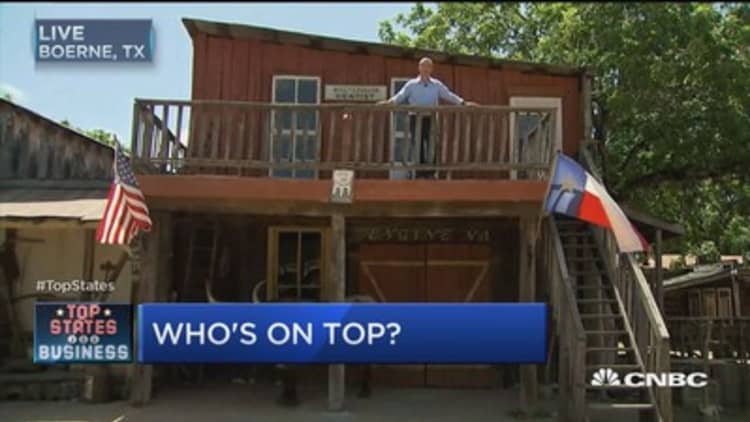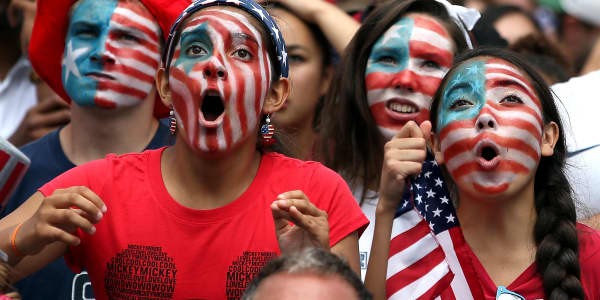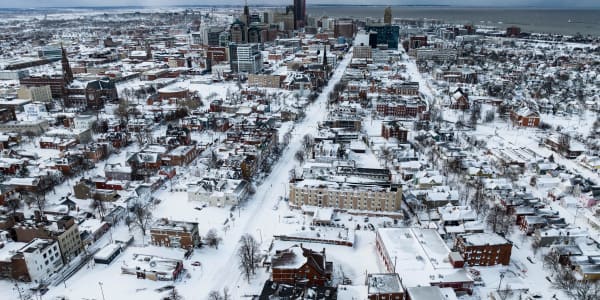
Spend a decade or so evaluating the states and you begin to notice some patterns — states that perform consistently well in good times and bad, and states so competitive, businesses can't afford to ignore them.
In honor of our 10th annual America's Top States for Business study, we decided to put those apparent patterns to the test by calculating the cumulative scores of all 50 states, both overall and in each of our 10 categories of competitiveness. Under our methodology, those categories have remained constant since our first study in 2007; only the weights of the categories have shifted to reflect the changing competitive landscape.
So this analysis represents some 30,000 pieces of data and a possible 1.25 million Top States points across 50 states over 10 years. Perform well here and you have truly earned the title we're calling "Top of the Tops."
For our first decade, there is almost no contest.
Texas — which has never finished below second place and has three Top States titles under its belt — also has the best cumulative score, with 15,029 out of a possible 25,000 points.
Texas isn't just the Top of the Tops overall. It also dominates two key categories, with first-place cumulative wins in Economy and Infrastructure. Texas comes in fifth for Technology and Innovation and notches top 10 finishes in Business Friendliness and Access to Capital.
A winning success formula
For as long as we have been keeping track, Texas has held firm to the formula outlined by then Gov. Rick Perry after his state captured its first Top States title in 2008.
"We've got low taxes, we've got a balanced regulatory climate, we've got a fair legal system, and we continue to fund an accountable school system so that we have a good, skilled workforce," Gov. Perry told us then.
The state has not always practiced what it preached, however. Even the Top of the Tops bottoms out in a few places.
For example, in Education — one of the main ingredients in Perry's formula — Texas has managed just one top 10 finish (in 2013) but otherwise has never finished better than 27th. The state's cumulative Education rank is 28th. Texas finishes 40th in Education this year, reflecting a serious funding gap.
While enrollment at Texas public colleges and universities has surged 23 percent since the Great Recession — and 15 percent in just the last five years — state support for higher education has not kept pace, according to the State Higher Education Executive Officers Association. In fact, the organization says, funding has dropped nearly 20 percent in the past five years, one of the worst records in the country.
It's not just higher education. The National Education Association estimates Texas is spending about $8,900 per K–12 student this school year. That's one of the lowest rates in the nation. And while higher per-student spending — particularly in a populous state — doesn't necessarily translate to better education, Texas test scores lag the rest of the country.
Texas also suffers from nagging quality-of-life issues. On a cumulative basis, Texas ranks 34th in our Quality of Life category. It has never finished better than 22nd (back in 2008) and this year comes in tied for 37th.
It is not that there are no lovely places to live in Texas, but we also look at other factors, such as health. Texas has the largest percentage of uninsured residents of any state. Like many Republican-led states, Texas opted out of the federal Medicaid expansion under the Affordable Care Act. But the state has done little else to promote increased coverage, leaving it to residents to fend for themselves.
Our Quality of Life category also considers inclusiveness. The National Conference of State Legislatures says Texas is one of only five states with no public accommodation law protecting non-disabled individuals from discrimination (the others are Alabama, Georgia, Mississippi and North Carolina). At a time when businesses are calling on states to remove any barriers that limit the attraction of skilled workers, Texas' policies cost the state points.
Those weak spots help explain why, despite its inherent strengths, Texas has had a four-year drought of Top States titles, last capturing first place in 2012.
The runners-up
Another example is Virginia, which comes in second in our cumulative rankings, with 14,686 out of 25,000 points, even though it has faded from contention since it captured the last of its three Top States titles in 2011.
The Old Dominion shows how the competitive landscape can quickly shift on a state and render some of its inherent advantages less effective. In the early years of our study, Virginia benefited from its proximity to Washington, D.C. But government spending cuts and the collapse of the housing market hit Virginia where it lived. The state finishes tied for 13th this year, down from 12th in 2015.
Other Top of the Tops winners include third-place Utah, which takes its first annual title this year, followed by perennial contenders Colorado and North Carolina.
We also calculated the cumulative winners in our 10 categories of competitiveness.
For Workforce, Georgia takes the top spot. Year after year the state has offered an ample supply of skilled workers — increasingly important to business these days. The fact that the recession hit Georgia hard, boosting the supply even more during the leanest years, helped the state's cumulative Workforce score.
In Cost of Doing Business, it's South Dakota, which rode that important category to its sole overall Top States win in 2013. But as the economy improved and the skills gap widened, low cost is much less of a path to victory than it once was.
Texas packs the one-two punch of Infrastructure and Economy, winning both of those categories handily. Even now, with the price of oil depressed, Texas' economic prowess is on full display.
For Quality of Life, there's just no beating Hawaii. And this has little to do with beautiful beaches and gorgeous scenery. Hawaii's environment is pristine, its people are healthy, and its laws are inclusive. All that, plus it is Hawaii.
California leads the way for Technology and Innovation — an example of how America's most populous state is a study in contrasts. Entrepreneurs and innovators still flock to the state, even if it means paying some of the highest costs in the nation. Money also flows to California, which is Top of the Tops in our Access to Capital category.
Massachusetts is the cumulative winner for Education, a category it typically dominates. Students in the Bay State excel from kindergarten through college, and the state tends to provide the resources to make that happen.
South Dakota is tops for Business Friendliness, and Oklahoma clinches Cost of Living, as it offers the lowest for that category.
Bottom-rung states
Because we rank all 50 states, we can also see which ones have done consistently poorly in our studies.
The fifth worst state on a cumulative basis is Mississippi. While the state offers low costs, it has had a consistently troubled economy, and a legal and regulatory environment that is somewhat lacking in southern hospitality toward business.
Ranking 47th is West Virginia, which tends to do poorly for Workforce, with the least educated workers and a large union presence.
Rhode Island finishes 48th, perennially dogged by poor infrastructure and high costs.
Bringing up the rear are Alaska and Hawaii at 49th and 50th, respectively. Both states suffer from some problems that are beyond their control, primarily because of their location. Both are inherently expensive places for business, and both suffer from poor infrastructure, at least by Lower 48 standards. And that is likely to remain the case year after year after year.







